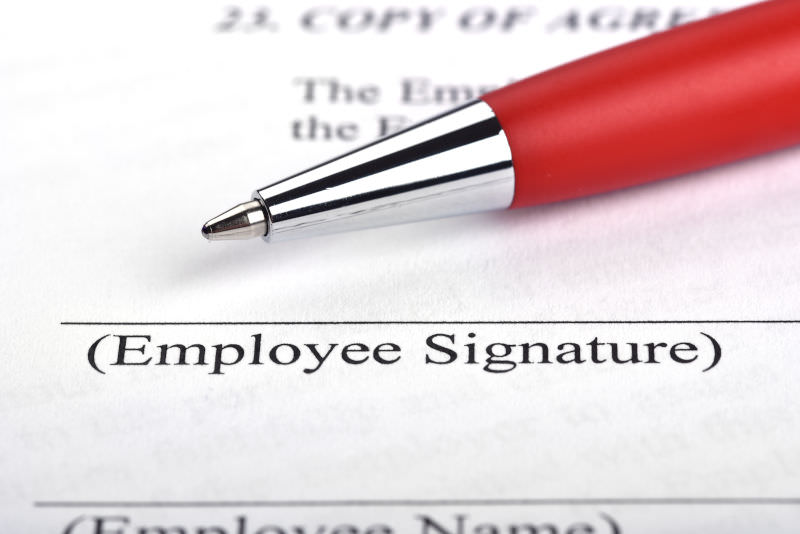In this 7-part series of blog posts, we explore the basics of employment law to help offer advice to managers and business owners.
Here is part 1: Dismissals
There are 5 reasons in law where employees can be dismissed from employment:
- Conduct
- Capability
- Redundancy
- A statutory duty or restriction prevents employment continuing
- Some other substantial reason
1. Conduct
For a conduct dismissal to be fair the criteria laid down in British Home Stores v Burchill need to be satisfied. These are:
- Whether the employer actually believed that the employee was guilty of misconduct
- Whether it had reasonable grounds on which to base that belief
- Whether it had carried out as much investigation as was reasonable in the circumstances of the particular case.
Remember that the burden of proof is that you should have a “reasonable belief” and not prove “beyond all reasonable doubt” as in a criminal case.
Wherever possible, the person doing the investigation should not be the decision maker.
Any evidence should be given to the employee prior to any disciplinary hearing and at any disciplinary hearing the employee should be given the right of representation by a work colleague or Trade Union official. They have no right for anyone else to be present.
2. Capability/Performance
For capability dismissals to be fair there will normally need to be at least 2 cautions before a dismissal. Many absence issues are dealt with under capability. Before a dismissal there should be:
- A discussion about where the under performance is
- What acceptable performance looks like
- What support is needed to achieve acceptable performance eg training
- How long the employee has to demonstrate acceptable performance
- What happens if no improvement
- If absence related, a medical report from GP or Occupational Health specialist will be needed.
3. Redundancy
Redundancy is “work of a particular kind that has ceased or diminished”. This includes, closure of the business, re-organisations, relocation of the business, redistributing work to other members of a team, reduction in business activity meaning less staff are needed.
For redundancy to be fair there needs to be:
- A genuine consultation with a view to avoiding the redundancy. This can be as short as 2 weeks (but not less) if less than 20 are at risk at an establishment.
- If between 20-99 at risk there is a statutory consultation period of 30 days
- if 100+ at risk, there is a statutory consultation period of 45 days
- If 20+ are at risk a HR1 form will need to completed
- If a selection needs to be made between employees, then a fair selection process needs to be used. Ideally, this should be agreed as part of the consultation period.
- Redundancy notices should not be given out until the consultation process has been completed.
- Failure to follow the statutory redundancy consultation process can lead to Protective Awards of up to 90 days per employee. This is before any unfair dismissal claims.
4. Statutory duty or restriction
Although relatively rare examples where this may apply are:
- A driver loses his driving licence but needs it to do their job
- visa has expired and no longer has the right to work
- is barred from working with vulnerable adults after DBS checks
Even when a situation like this happens a fair procedure must be adopted.
5. Some other substantial reason.
Anything not covered by the first 4 reasons are covered by this. Examples are:
- the non-renewal of the fixed-term contract of an employee recruited as maternity leave cover;
- the dismissal and re-engagement of an employee to impose new contractual terms and conditions that the employee has refused to agree;
- a dismissal because of a personality clash between employees that makes it impossible for them to work together;
- the dismissal of an employee where there are concerns relating to the safeguarding of children or vulnerable adults, but where the employer does not have grounds for a misconduct dismissal.
Again a fair process must be followed.
Appeals
After any disciplinary action or dismissal, the employee(s) should be given the right to appeal the decision. Any appeal should be:
- Put in writing by the employee, ideally stating the grounds on which they want to appeal
- Be heard by someone more senior to the person who made the original decision or someone independent.
- Employees have the right of representation by a work colleague or Trade Union representative. They have no legal right to any other representation unless agreed in advance.
- Appeals can be a complete re-hearing of the case if flaws are believed to be in the original dismissal.
- Responses should be in writing
Wrongful Dismissal
Is not the same as Unfair Dismissal. Wrongful dismissal is where the employee’s contract is broken in the dismissal process eg not paying notice pay or the correct notice pay. The remedy for this is damages for Breach of Contract which is in effect the notice pay they should have received. Contractual Notice Pay or Statutory Notice Pay which ever is the greater.
Constructive Dismissal
Constructive dismissal is where an employee resigns due to their contract of employment being breached. A constructive dismissal usually only applies in a serious situation and could be a single event or a series of events.
An employee can claim constructive dismissal if they have had, for example, a cut in their wages without agreement, if they have been unlawfully demoted or if they have been discriminated against or bullied.
A constructive dismissal might lead to a claim for wrongful dismissal.
For expert advice on employment law and dismissals, please contact our Head of Employment Law Navya Shekhar – call 01423 788 538.
Read part 2 of of this series of blog posts: Employment Tribunals
Further Reading
From one of the UK’s most read legal blogs.










